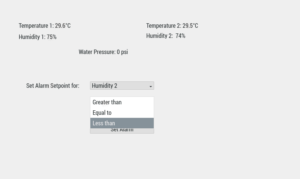LoRaWAN® Wireless Sensors
(long range with alarm systems)
Introduction:
Currently, most sensors in the world are wired and have a lot of cabling issues, not to mention the high cost of the cables. Then there’s the issue of internet connectivity in remote places. Thanks to RAKWireless I was able to incorporate the LoRaWAN® technology with a Raspberry Pi to design systems that would assess the proper functioning of field devices. The sensor nodes have a battery life of 10 years if you set them to transmit every 15 minutes, which is exceptionally long.
Pictures:
Description:
The upcoming LoRaWAN® technology has various different node sensors and gateways available from various companies. However, for this project I decided to go with a Raspberry Pi based gateway RAK2245 from RAKWireless as a Pi would grant more flexibility. Combine that with RAK2013 and now we have cellular connectivity for SMS (and internet connectivity).
The benefit of using LoRaWAN® nodes instead of standard wireless sensors would be the signal length. LoRaWAN® nodes transmit at low frequency signals (865 to 867 MHz in India) and are capable of transmitting over 2 kilometers. That makes it possible for placing the sensors at a remote location, while the gateway can be placed at a maximum of 2KM where internet connectivity is feasible.
By combining the gateway with a Raspberry Pi and cellular network connectivity I was able to provide the provision alarm systems. For example, if the value of a certain sensor drops below the desired value, the Pi will immediately send an SMS and an email to the allocated contacts.
The sensor nodes pictured above are two Dragino nodes with temperature & humidity sensors (Sensirion’s SHT31) and one Baumer water pressure sensor attached to Ursalink’s sensor node.







